Illaoi TF J4 has been a powerhouse since day one of the new season. In the past two weeks, it has proven to be a meta staple and a deciding factor in today’s meta. Find out why the deck has been so powerful, and how to pilot it to success!
Deck Breakdown
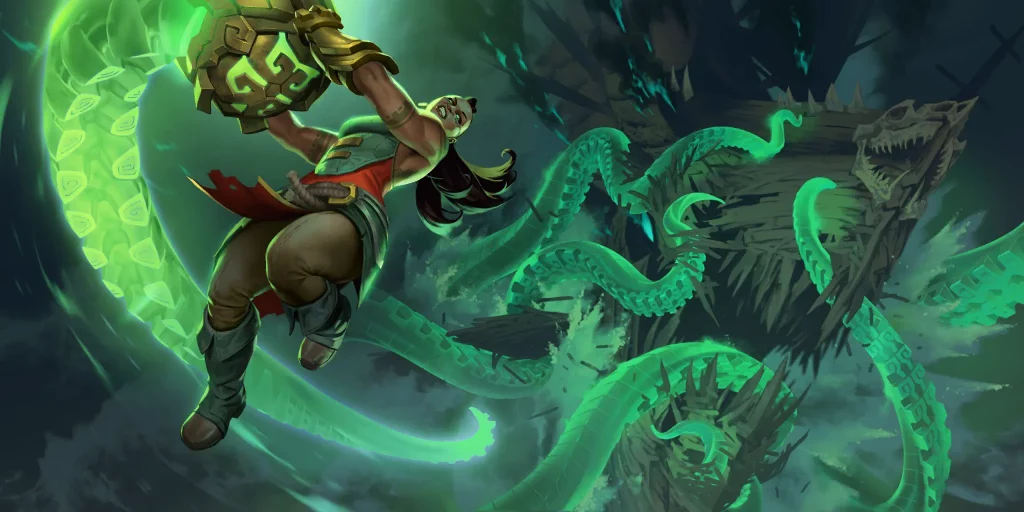
Illaoi is the centerpiece of this deck. She utilizes the Spawn mechanic to enhance herself and strike with powerful Overwhelm attacks.
is the centerpiece of this deck. She utilizes the Spawn mechanic to enhance herself and strike with powerful Overwhelm attacks.

17 cards
23 cards
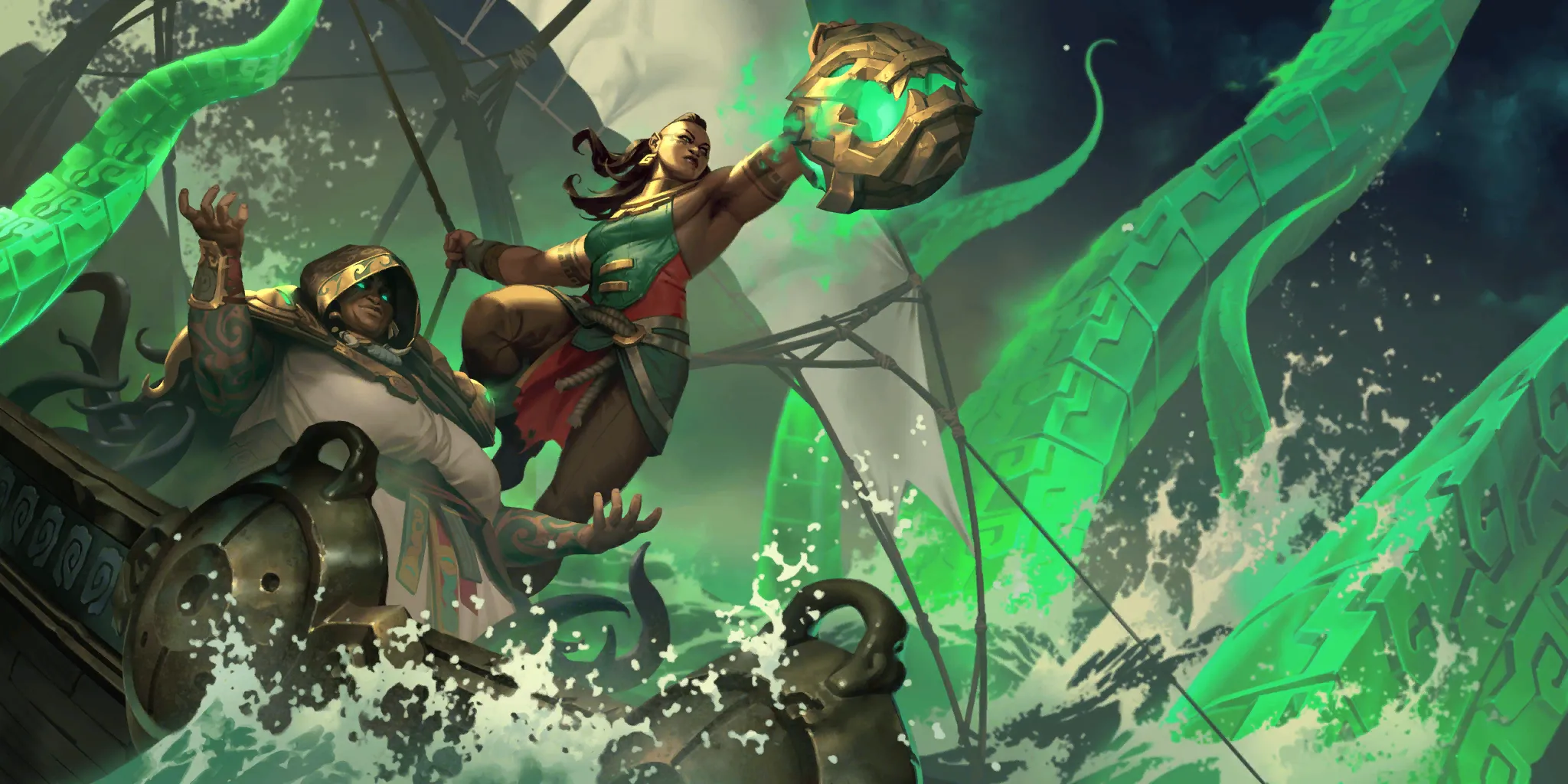

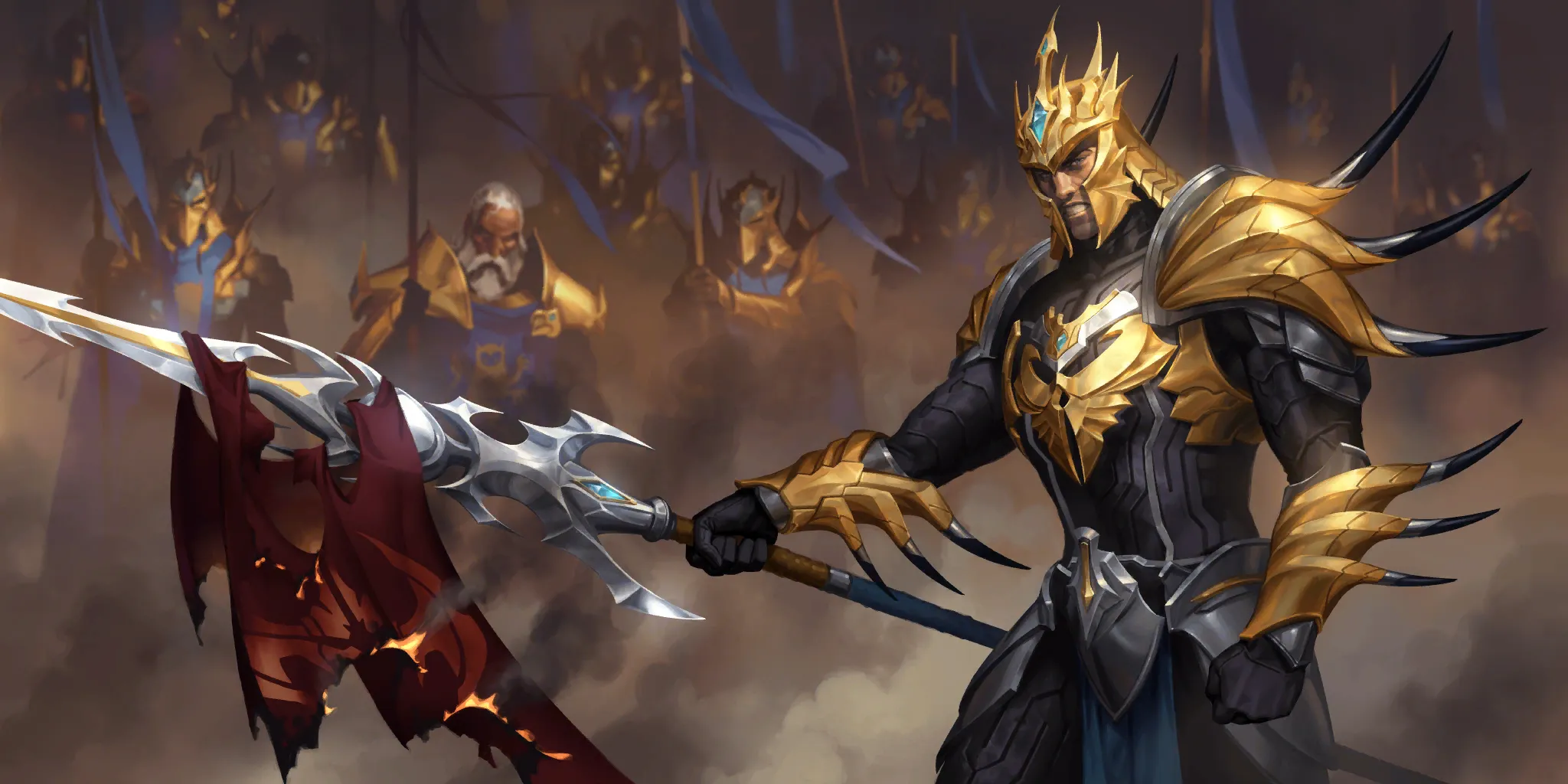
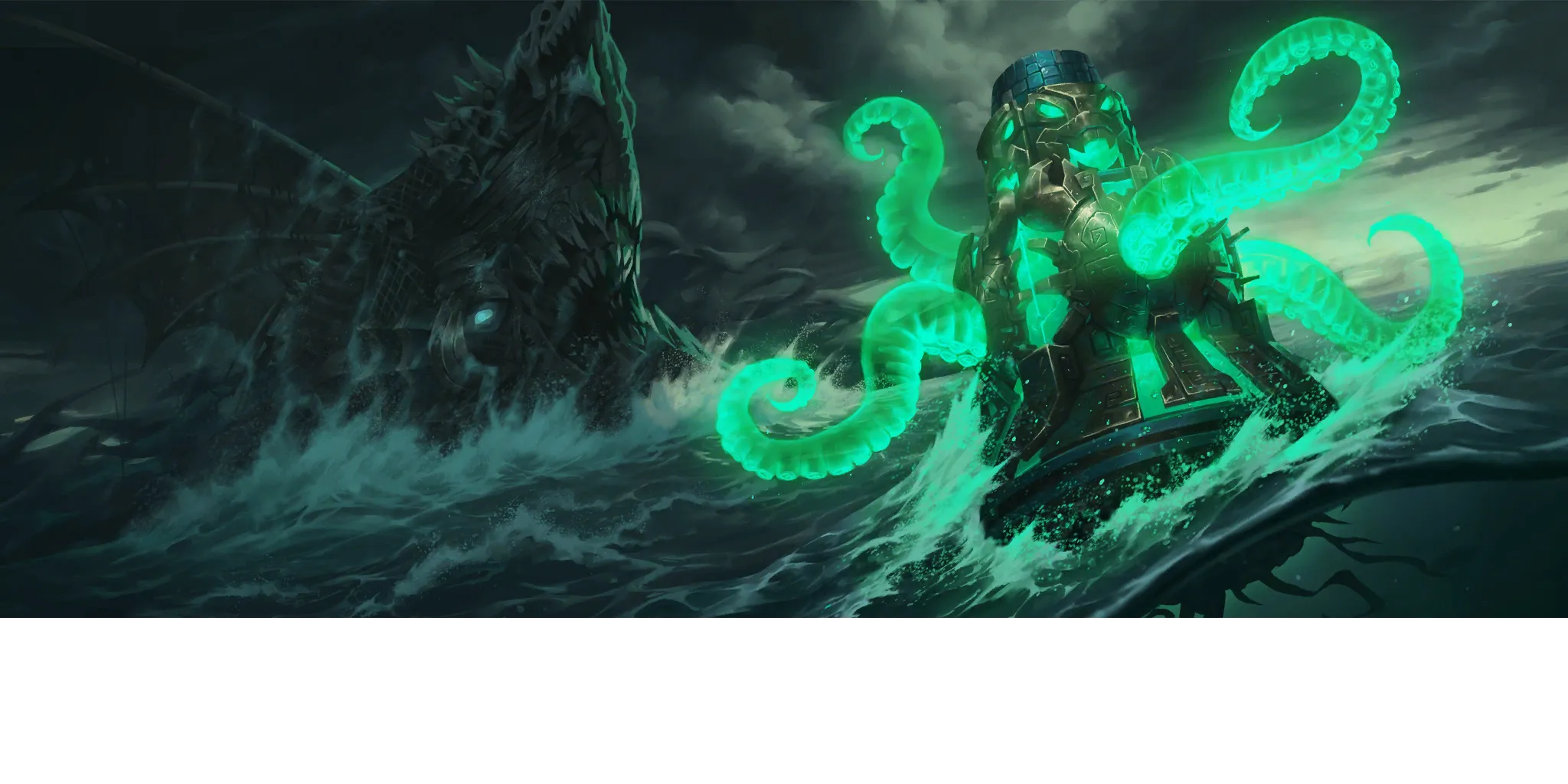
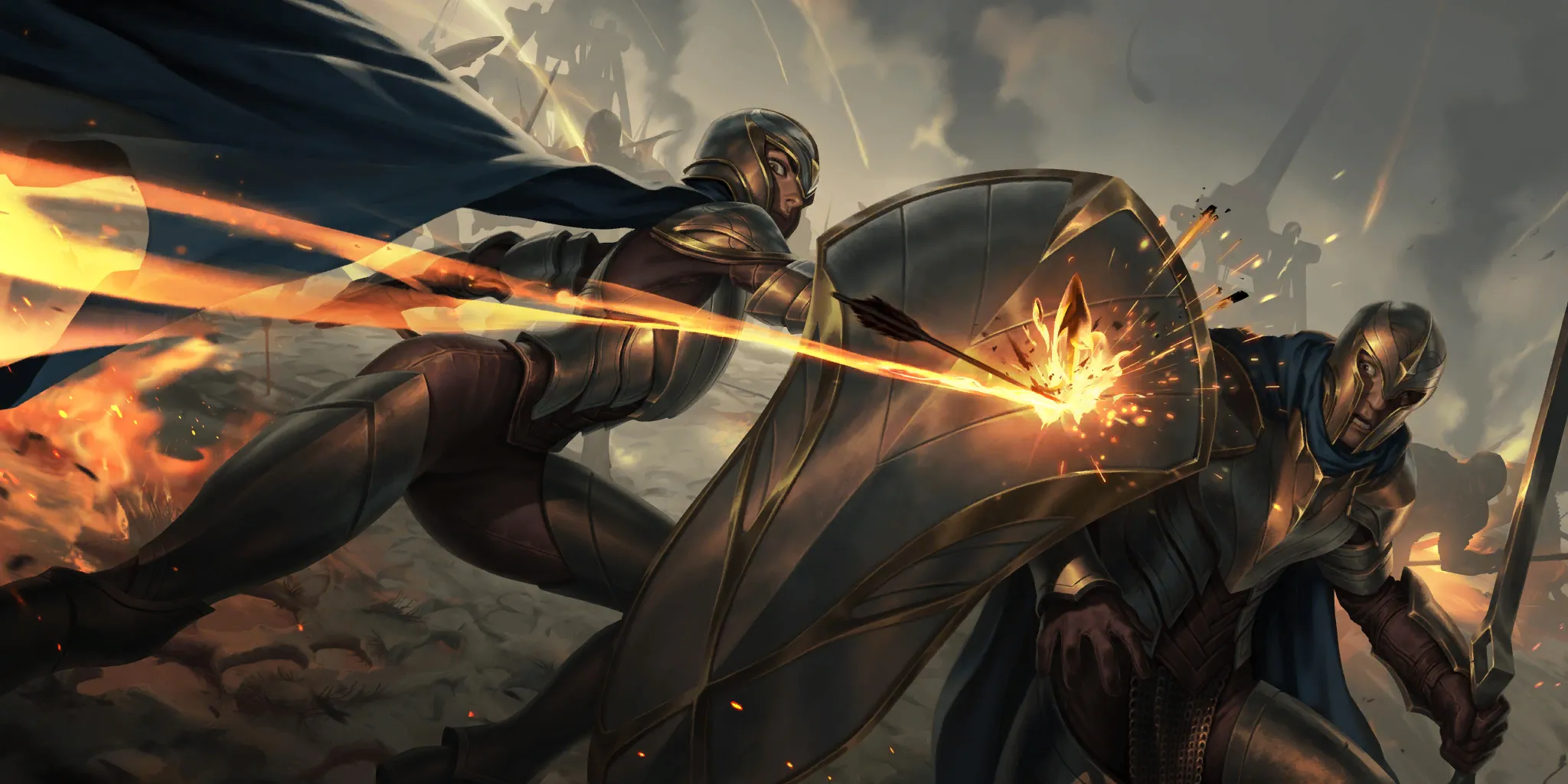
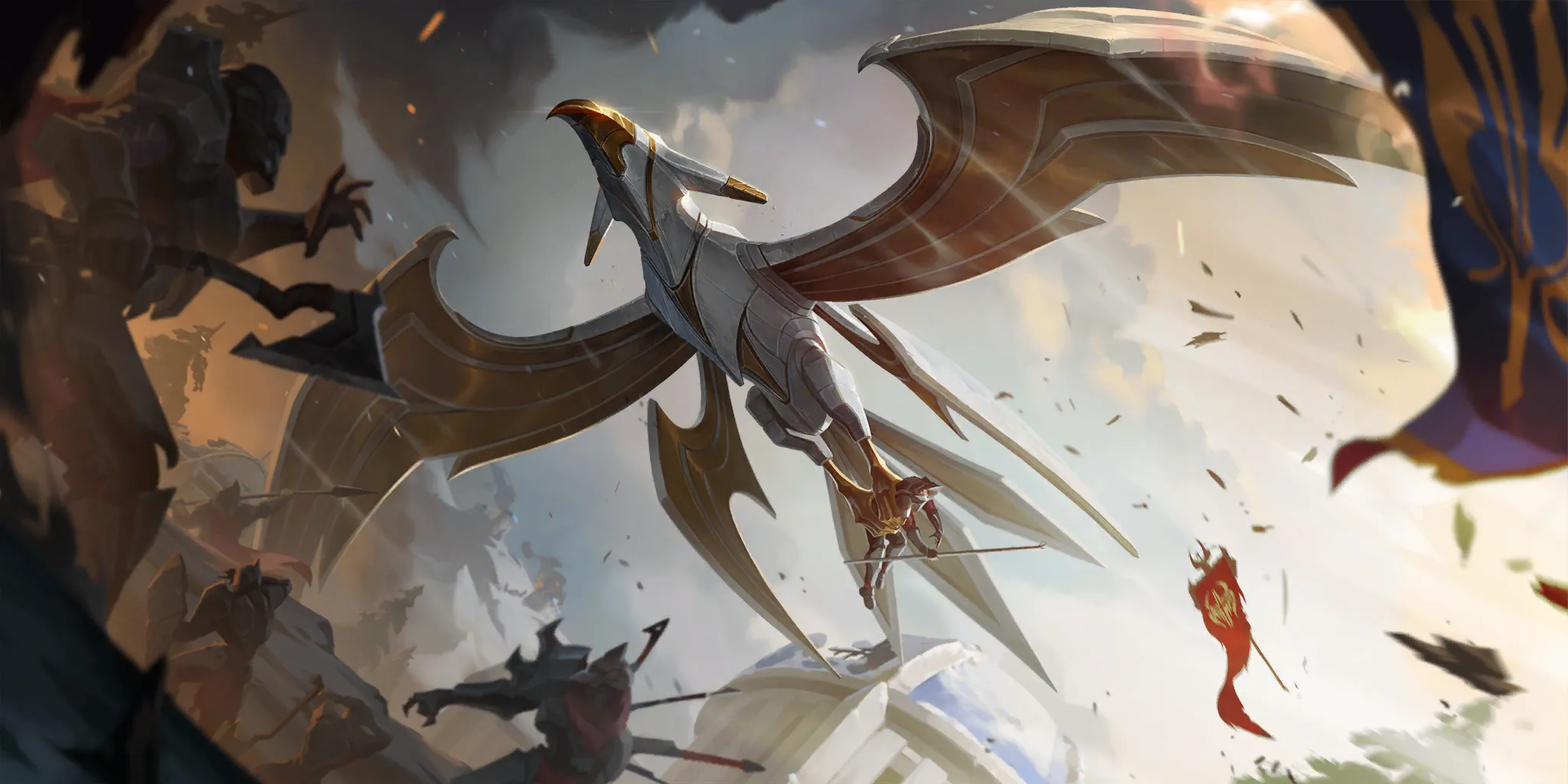
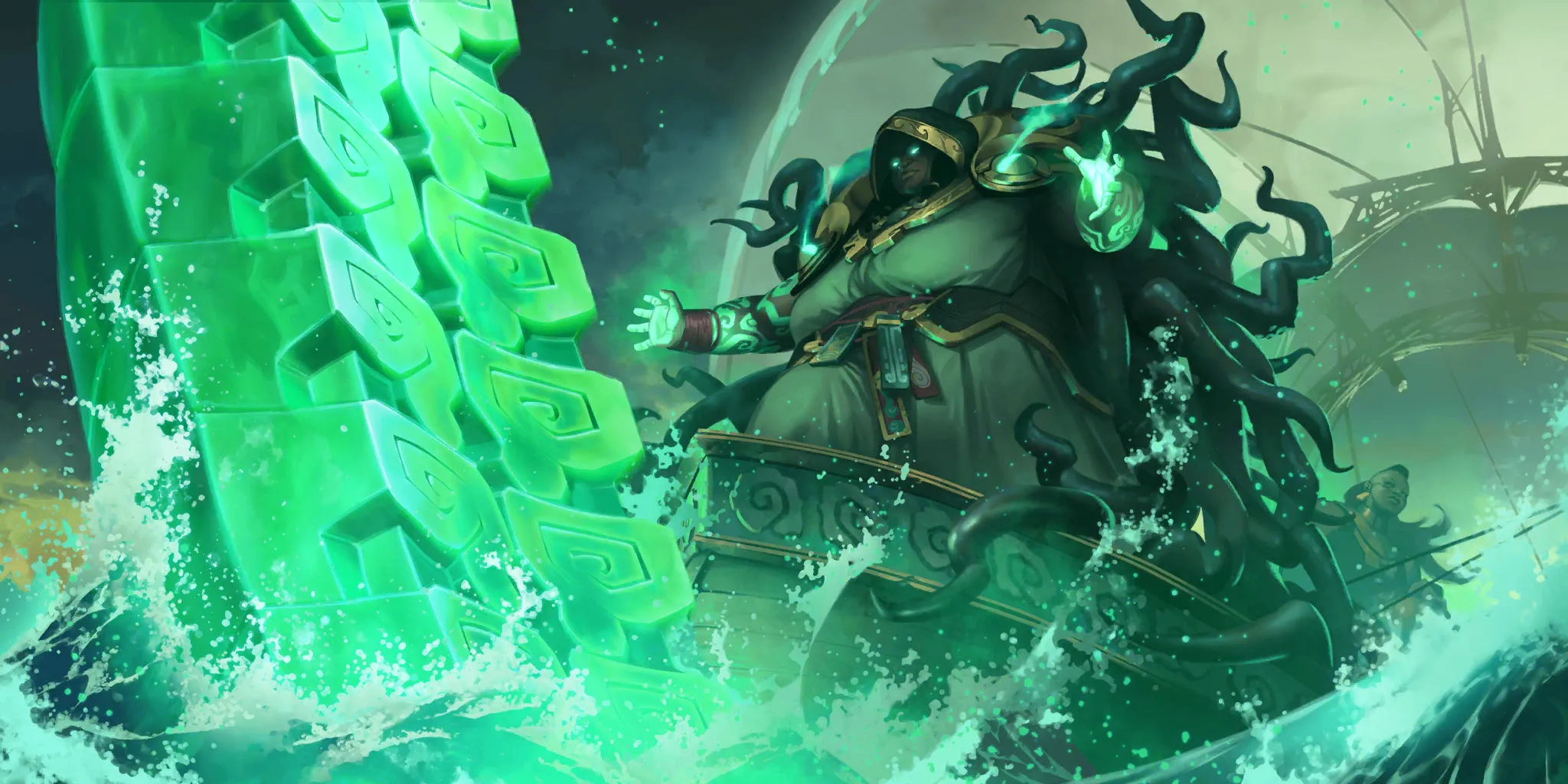
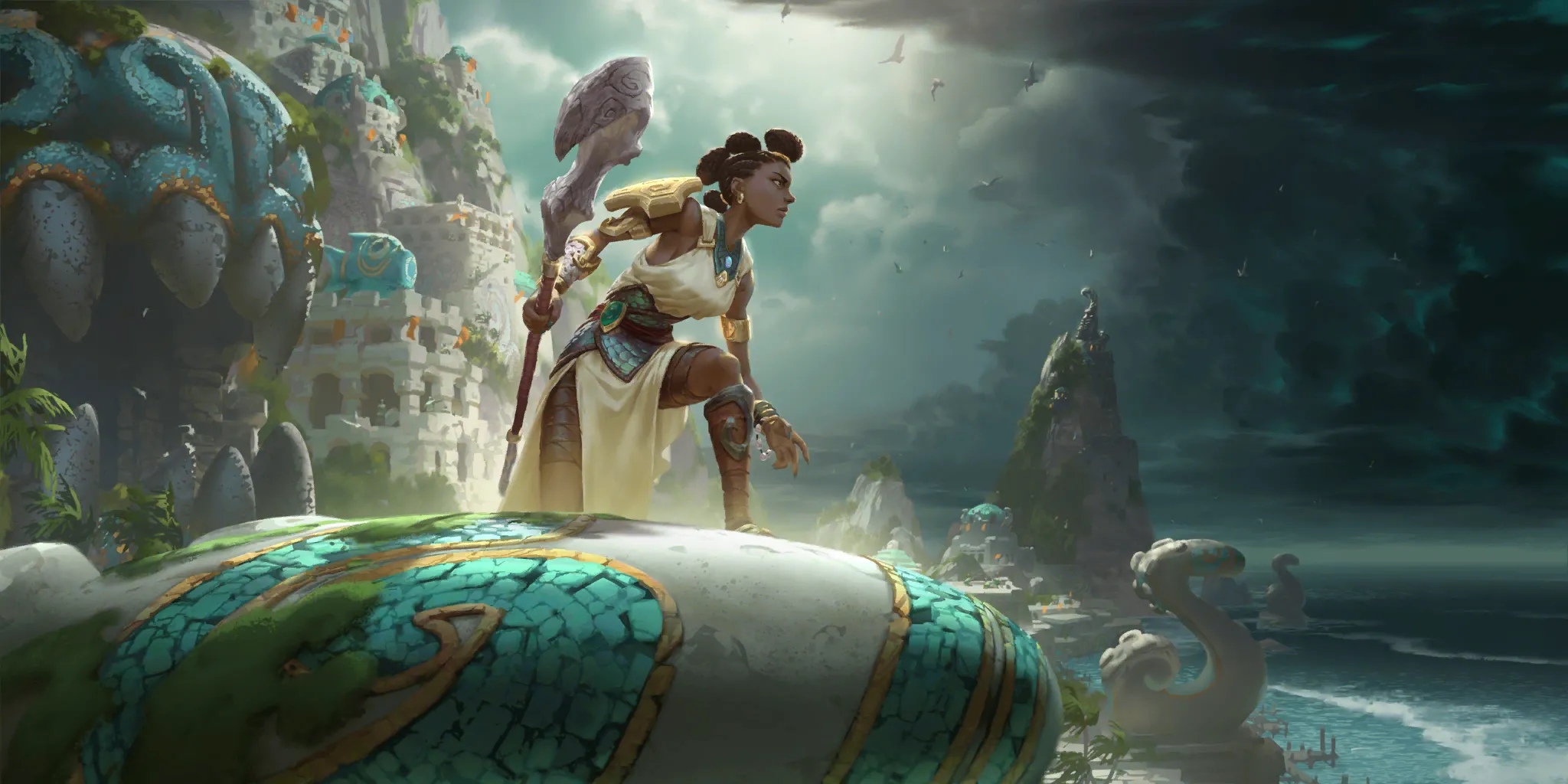
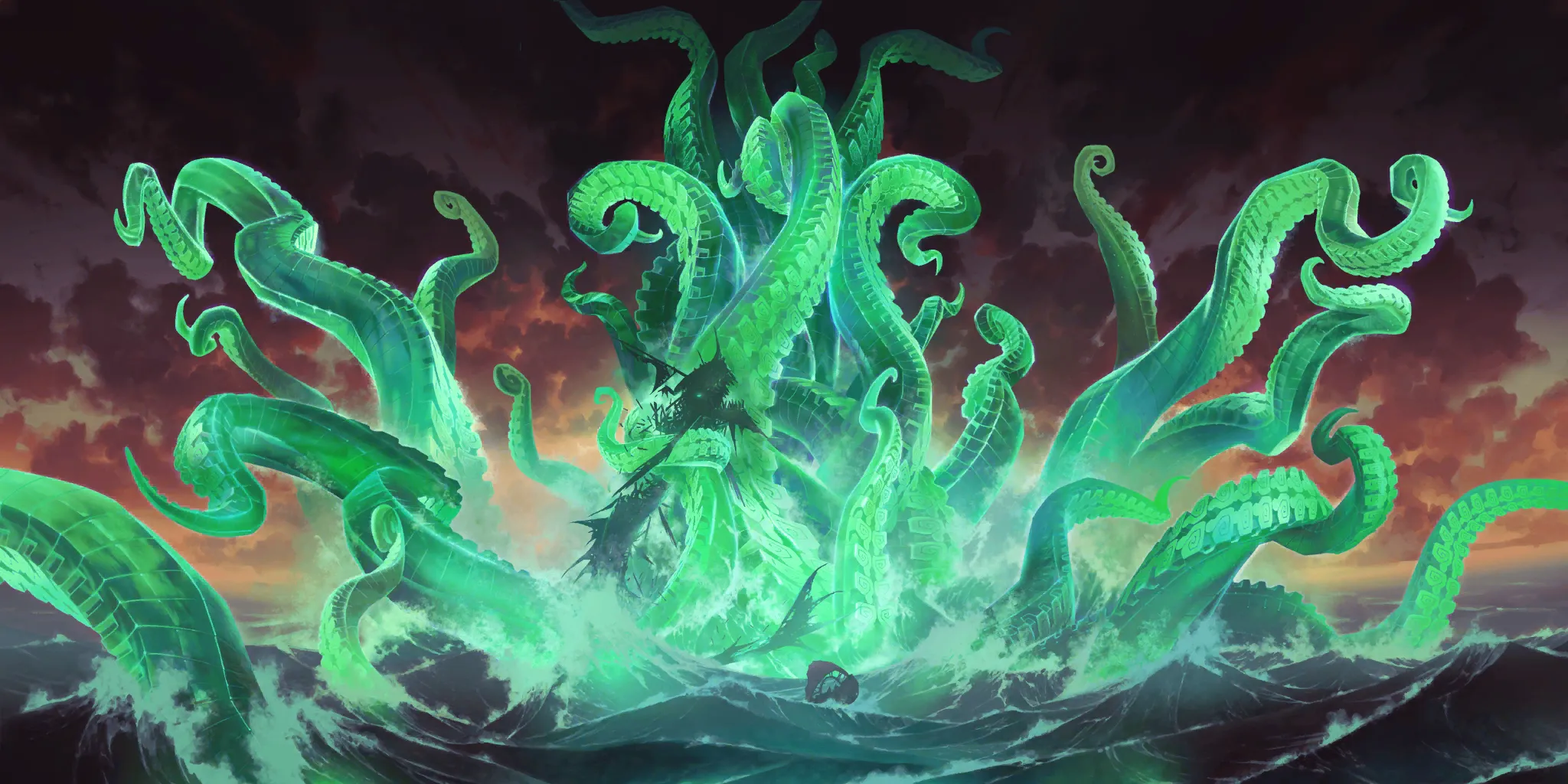
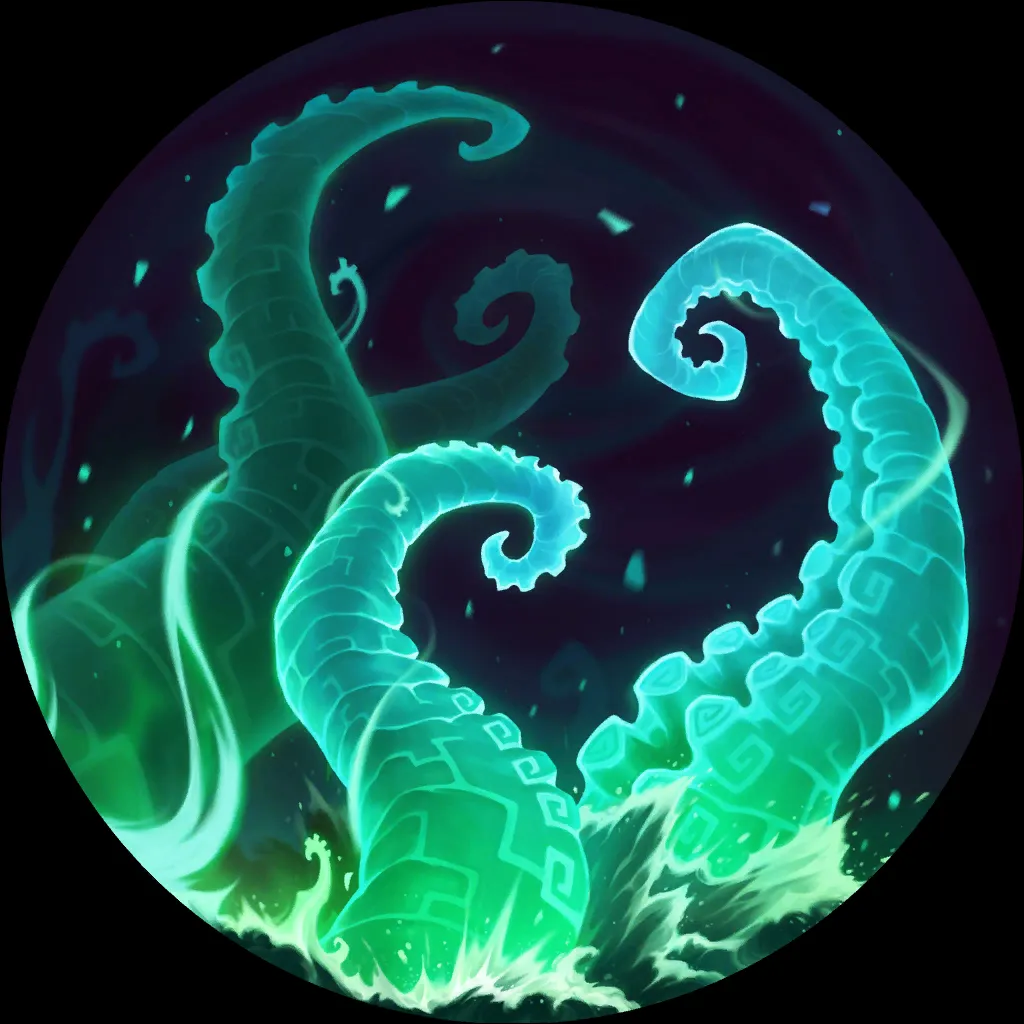
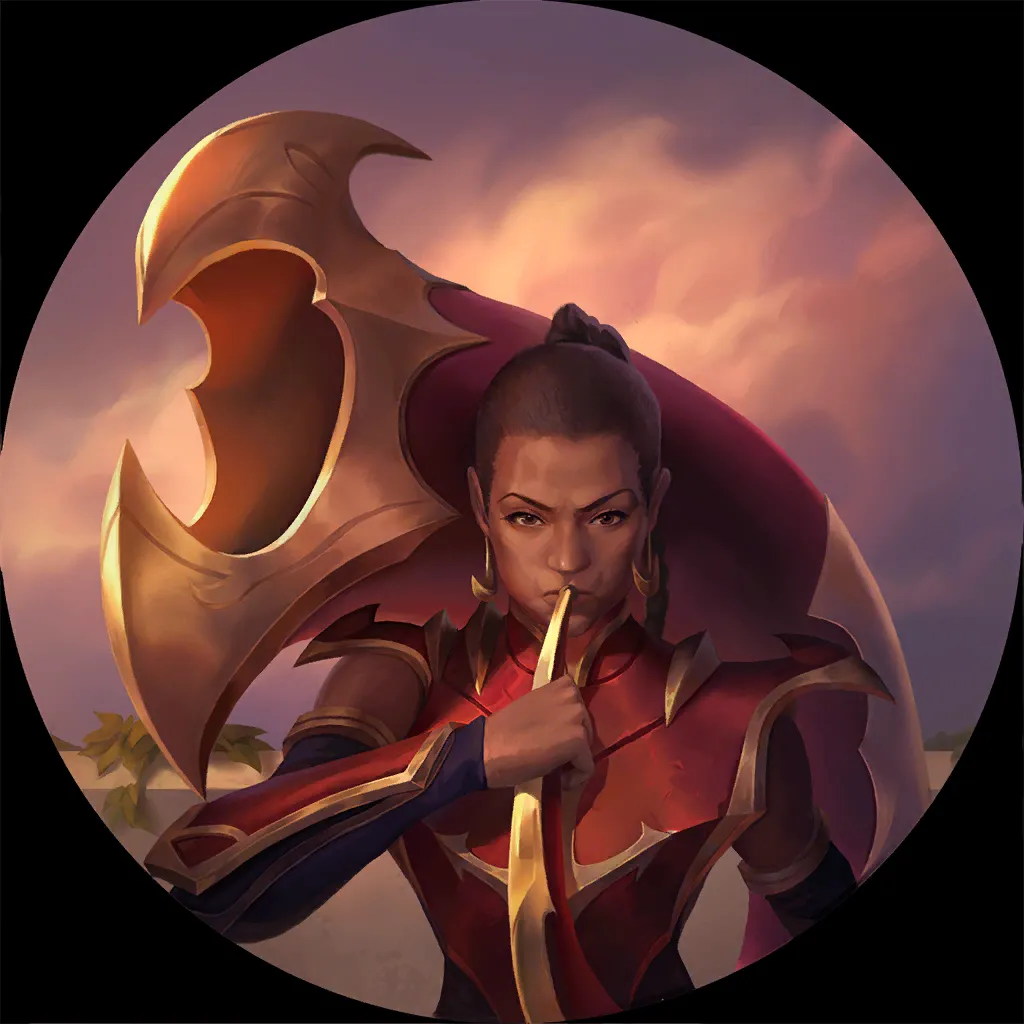
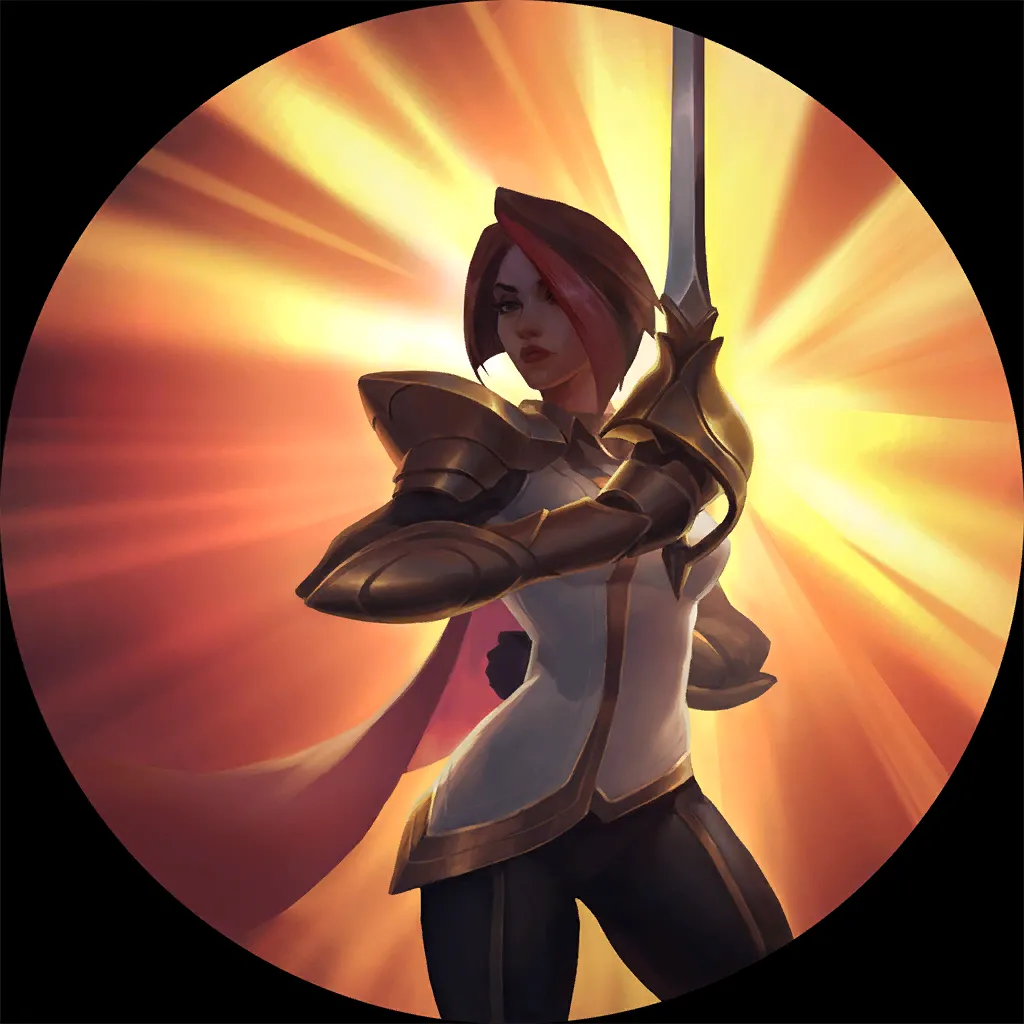
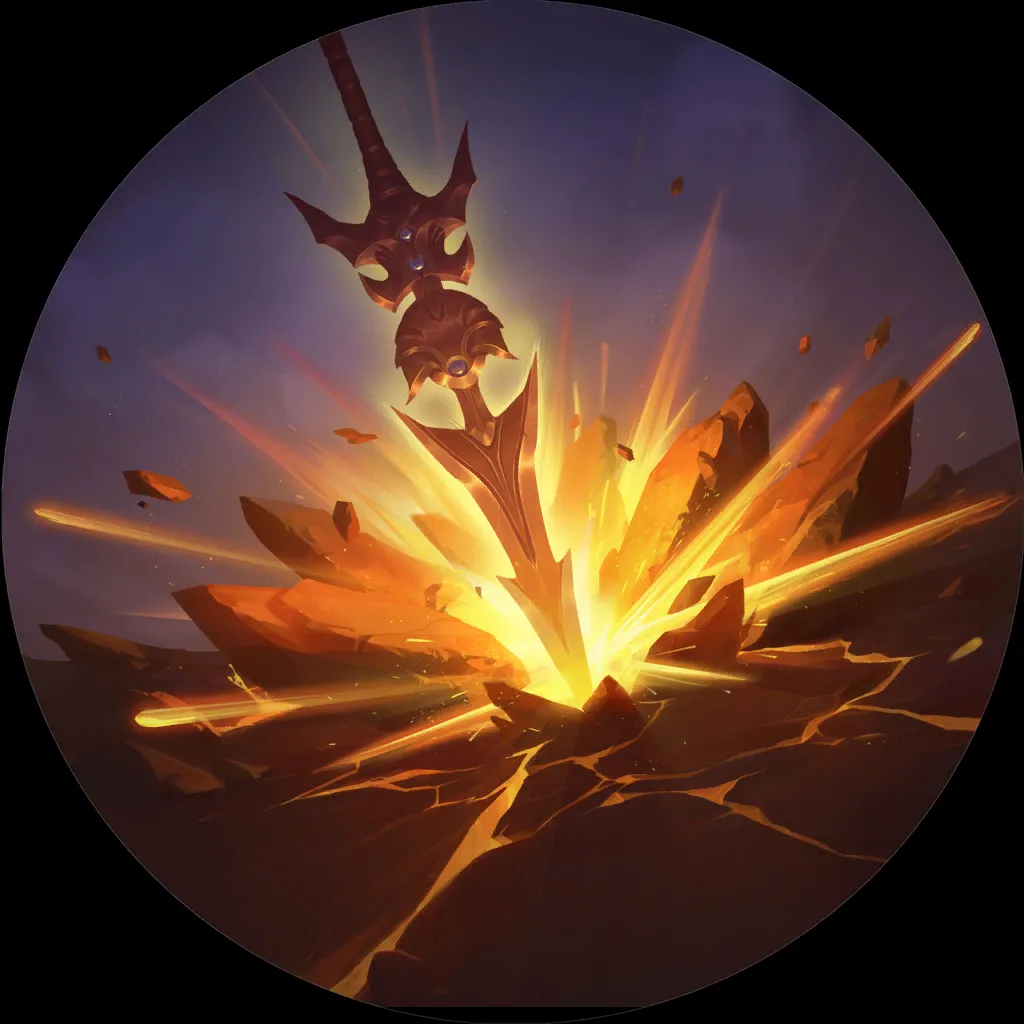
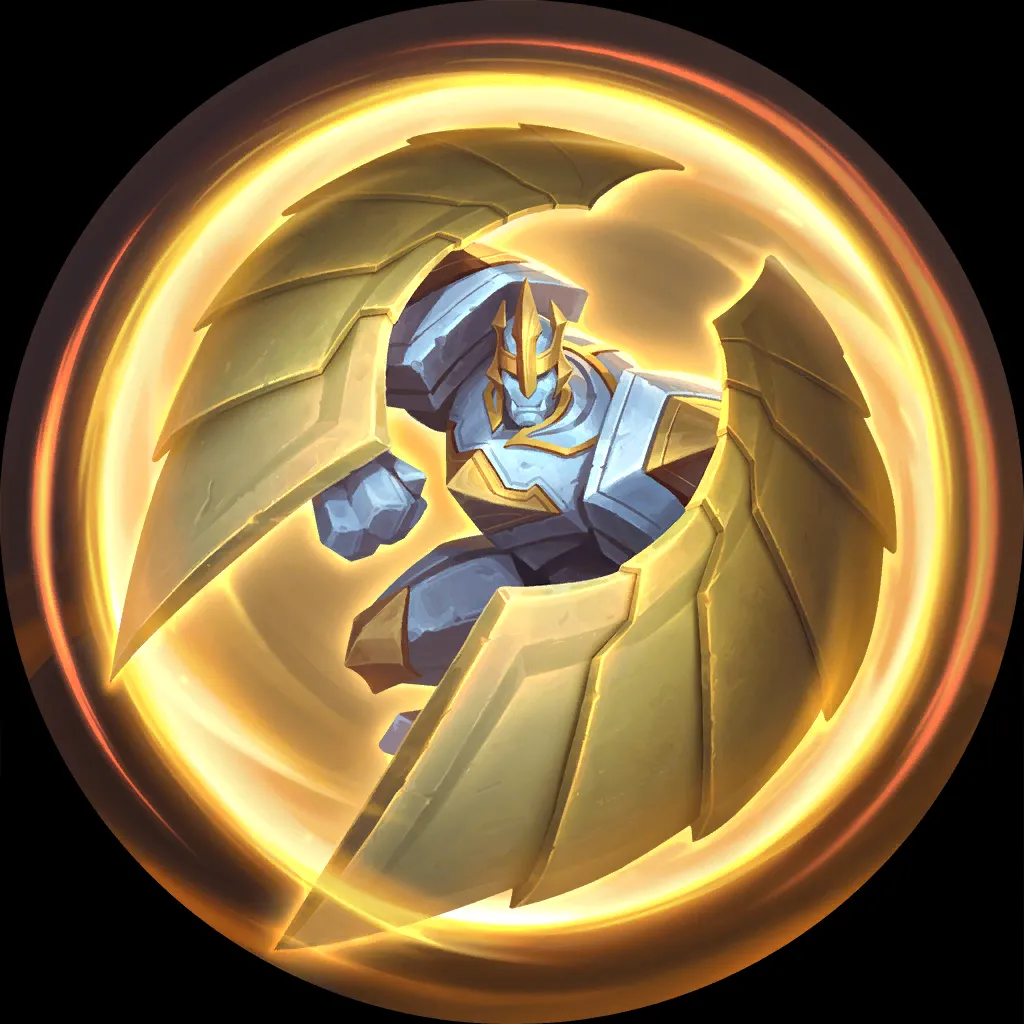
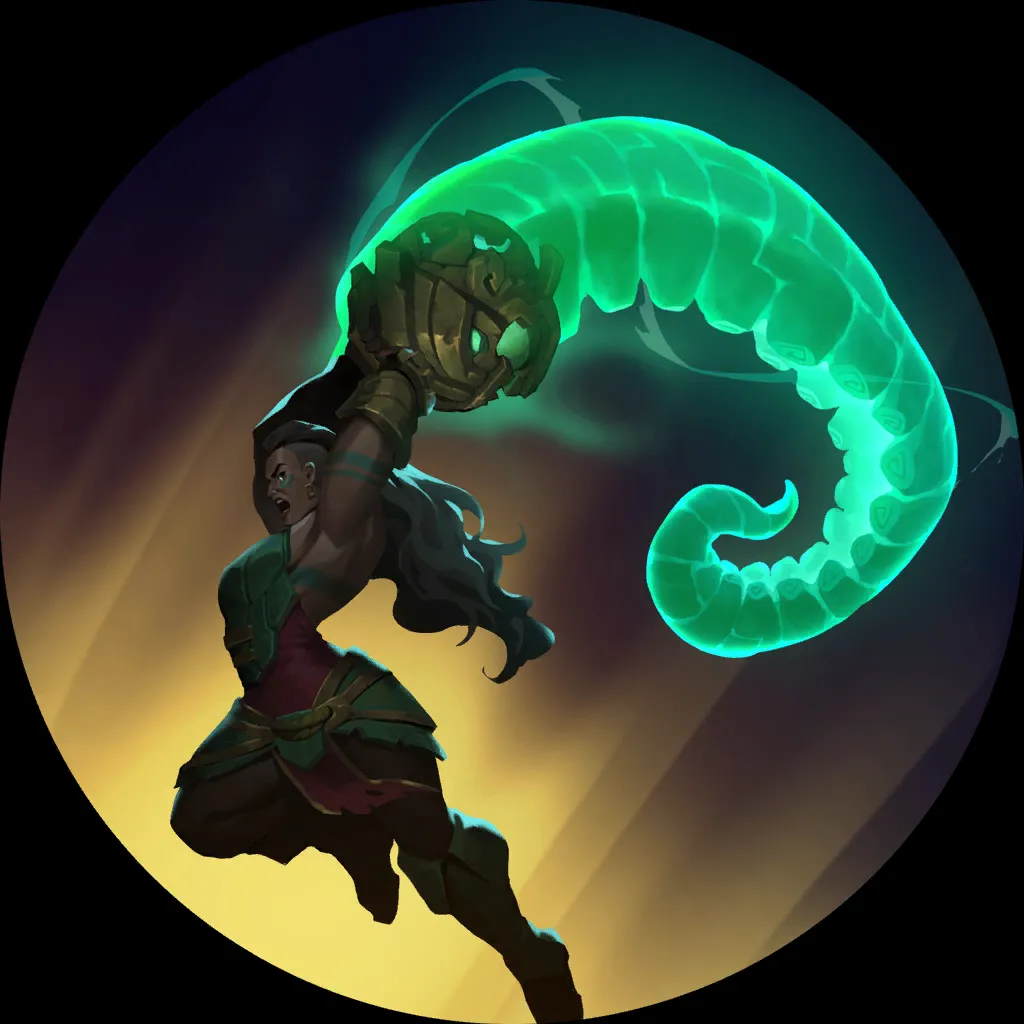
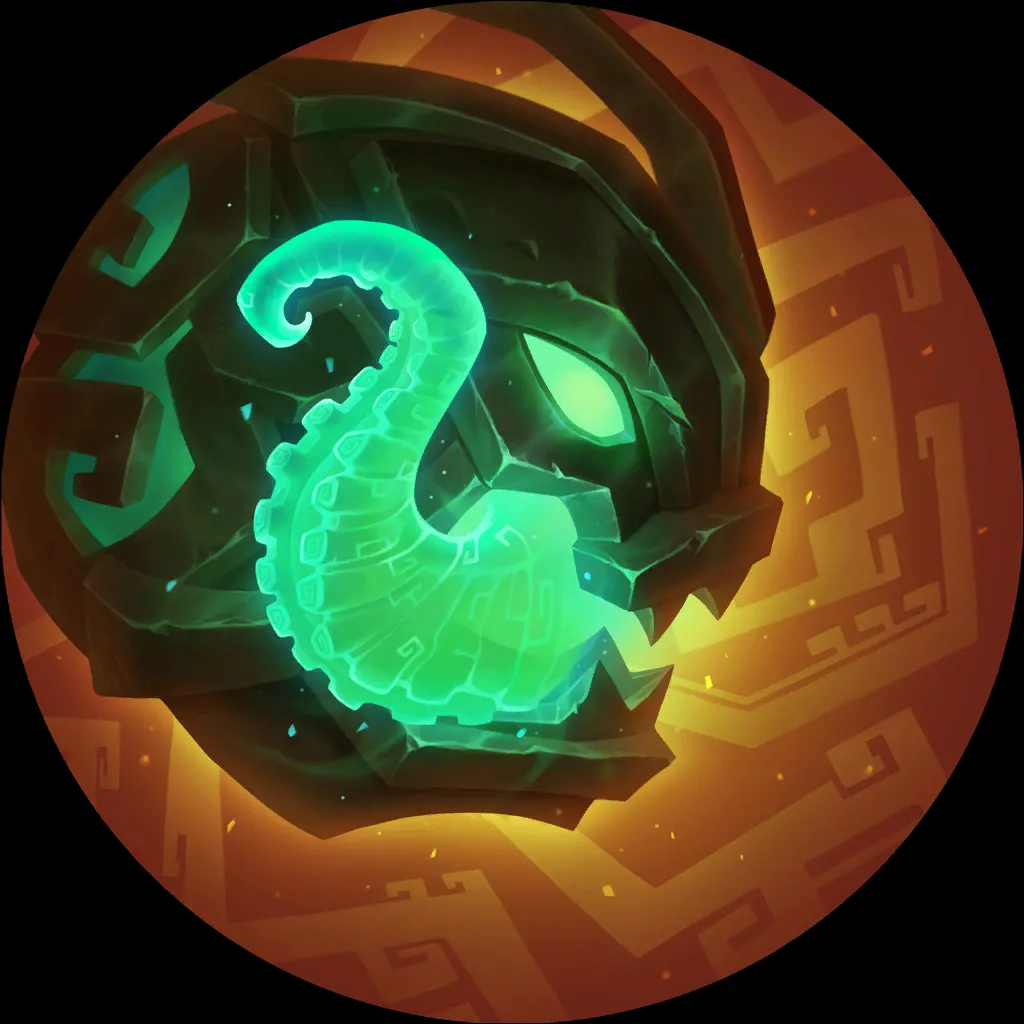
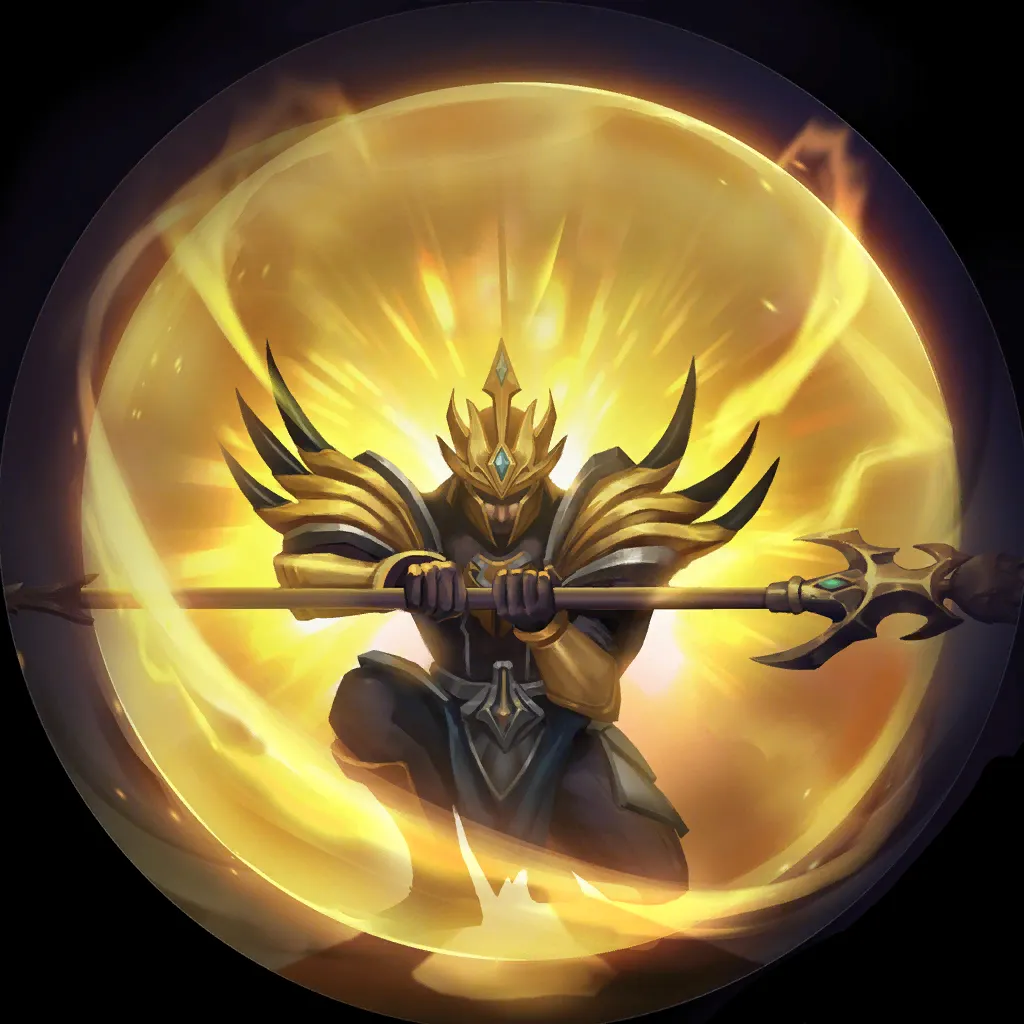
We want to build up a Tentacle before attacking with Illaoi
before attacking with Illaoi since she directly scales with the Tentacle's size.
since she directly scales with the Tentacle's size.
Ideally, we'll attack with a 6/6 Tentacle and Illaoi
and Illaoi – the Tentacle
– the Tentacle will grow to a 7/7, and Illaoi
will grow to a 7/7, and Illaoi to 8 attack, thus leveling her in one go!
to 8 attack, thus leveling her in one go!
But how do you grow a Tentacle , you might ask?
, you might ask?
Let’s investigate this matter further!



Watchful Idol is the most valuable card in this deck. For a mere one mana cost, it will nourish a baby Tentacle
is the most valuable card in this deck. For a mere one mana cost, it will nourish a baby Tentacle and grow it to 2/2 by round three.
and grow it to 2/2 by round three.
As we will come to see in this guide, most of our mechanics to win the game rely on a big Tentacle. Hence, starting with a one-mana 3/3 Tentacle on turn three is massive and the reason this archetype has such a high winrate.
on turn three is massive and the reason this archetype has such a high winrate.
Answered Prayer is a flexible Spawn spell with one big downside – it’s quite inefficient. Most of the time, we will be using the original two-cost effect to pay one mana per Spawn, instead of the even more inefficient 1.25 mana per Spawn if we elect the five mana option.
is a flexible Spawn spell with one big downside – it’s quite inefficient. Most of the time, we will be using the original two-cost effect to pay one mana per Spawn, instead of the even more inefficient 1.25 mana per Spawn if we elect the five mana option.
This is also where we see how powerful Watchful Idol is. It provides you a 0.33-mana-per-Spawn deal which is way better than Answered Prayer
is. It provides you a 0.33-mana-per-Spawn deal which is way better than Answered Prayer , for the cost of waiting for one to two early rounds.
, for the cost of waiting for one to two early rounds.
Buhru Lookout is a great Spawner that provides us with an additional 4/3 body. Since we often have trouble withstanding wide attacks, Buhru Lookout
is a great Spawner that provides us with an additional 4/3 body. Since we often have trouble withstanding wide attacks, Buhru Lookout goes a long way at keeping us alive in the midgame. Just long enough to finish the game with Illaoi or an Overwhelm Tentacle
goes a long way at keeping us alive in the midgame. Just long enough to finish the game with Illaoi or an Overwhelm Tentacle !
!
Since nourishing a Tentacle costs some time, we need to make sure our Nexus stays above a negative health total. Thus, we play the two strongest two-cost followers in the game, who happen to be Demacian.
costs some time, we need to make sure our Nexus stays above a negative health total. Thus, we play the two strongest two-cost followers in the game, who happen to be Demacian.


Petricite Broadwing is the reason Illaoi J4 (as well as Illaoi Lux) boomed so heavily in the early days of the patch – Petricite Broadwing is Annie
is the reason Illaoi J4 (as well as Illaoi Lux) boomed so heavily in the early days of the patch – Petricite Broadwing is Annie 's natural Anniemy, and Jhin Annie in particular, who was massively overplayed on day one.
's natural Anniemy, and Jhin Annie in particular, who was massively overplayed on day one.
The unit will usually trade two for one since we can challenge a small unit of our opponent for our first attack.
Combine this with Brightsteel Protector , who can single-handedly swing the tempo in our favor. When we play her on our turn, we can give Petricite Broadwing
, who can single-handedly swing the tempo in our favor. When we play her on our turn, we can give Petricite Broadwing Barrier and kill a unit for free.
Barrier and kill a unit for free.
When we play her on our opponent’s turn though, they will either have to sacrifice one of their units for free (into our Barrier-buffed unit) or call off their attack completely.
Now that we have survived the early game, and build up a medium-sized feeler, what is our next step?
Well, smashing our opponent’s face Nexus of course!



Since big units are prone to be chump-blocked, The Sea's Voice is essential to winning the game. Either a giant Tentacle
is essential to winning the game. Either a giant Tentacle with Overwhelm, or the aforementioned Illaoi
with Overwhelm, or the aforementioned Illaoi , will be our usual paths to victory.
, will be our usual paths to victory.
The Sea's Voice ’s three-mana cost might trick you into believing she is an early game unit, but she isn’t.
’s three-mana cost might trick you into believing she is an early game unit, but she isn’t.
Giving a 3/3 or 4/4 baby Tentacle Overwhelm is barely worth it, and we would rather keep
Overwhelm is barely worth it, and we would rather keep feeding it Baby Food building it up and protecting it. Once your Tentacle reaches 6/6 and above, then giving it Overwhelm is a game-changer.
reaches 6/6 and above, then giving it Overwhelm is a game-changer.
Don't take these numbers too seriously though. The natural game flow will usually lead you to game states where it will become obvious when the time is right to slam down The Sea's Voice !
!
For the not-so-usual, drawn-out games where we struggle to finish the game with an Overwhelm attack, Nagakabouros itself steps in.
itself steps in.
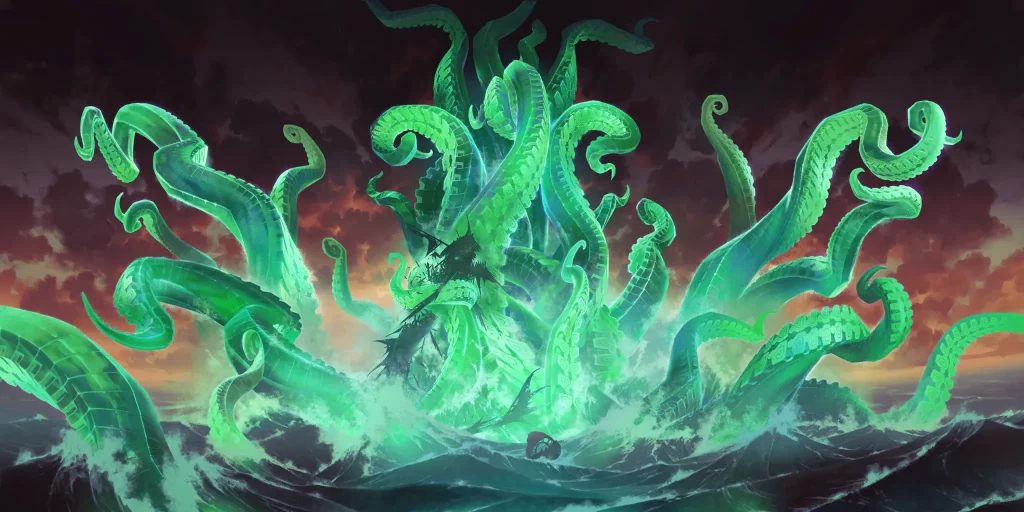
It’s quite difficult to crank up a Tentacle to 12/12. But, when your foe focuses on removing your Illaoi
to 12/12. But, when your foe focuses on removing your Illaoi + The Sea's Voice
+ The Sea's Voice , and ignores your Tentacle
, and ignores your Tentacle , Nagakabouros
, Nagakabouros has a realistic chance of “leveling up” and ending the game.
has a realistic chance of “leveling up” and ending the game.
In my experience, this happens rarely and we don’t want to rely on Cthulu Nagakabouros . Therefore, we only run it as a single copy, similar to The Arsenal
. Therefore, we only run it as a single copy, similar to The Arsenal in Taliyah Ziggs.
in Taliyah Ziggs.
We also run some reactive Spawn spells that are nonetheless key parts of our deck.


Tentacle Smash is a Slow spell that also bumps up our Tentacle
is a Slow spell that also bumps up our Tentacle . It can either remove a small foe like Elise
. It can either remove a small foe like Elise on its own, or tackle larger enemies like Viego
on its own, or tackle larger enemies like Viego or even a Frostguard Thrall
or even a Frostguard Thrall with the help of a pre-existing Tentacle
with the help of a pre-existing Tentacle .
.
Since Tentacle Smash is so versatile and gains us a tempo edge, it’s one of our key cards and we will often keep in our Mulligan.
is so versatile and gains us a tempo edge, it’s one of our key cards and we will often keep in our Mulligan.
Eye of Nagakabouros , on the other hand, is more value-oriented and will refill our hand. Since the spell is Burst speed, we can instantly summon a blocker if we find ourselves behind in tempo – its main use is drawing us cards, though, so don’t think that summoning a 2/2 unit at burst speed is a strong effect! =)
, on the other hand, is more value-oriented and will refill our hand. Since the spell is Burst speed, we can instantly summon a blocker if we find ourselves behind in tempo – its main use is drawing us cards, though, so don’t think that summoning a 2/2 unit at burst speed is a strong effect! =)
Spawning and all that might be great, but how the heck can we keep our Tentacle s from dying?!
s from dying?!


Sharpsight might have been nerfed, but it fulfills its job nonetheless. We will almost always use this spell defensively and are interested in its “give two health and block Elusives” part over the one-attack buff.
might have been nerfed, but it fulfills its job nonetheless. We will almost always use this spell defensively and are interested in its “give two health and block Elusives” part over the one-attack buff.
Shield of Durand is for the more courageous of us, that feel confident that their target won’t die this round. It needs a little more foresight and hence becomes more difficult to use effectively. That’s why we go with a 2/1proportion of Sharpsight
is for the more courageous of us, that feel confident that their target won’t die this round. It needs a little more foresight and hence becomes more difficult to use effectively. That’s why we go with a 2/1proportion of Sharpsight and Shield of Durand
and Shield of Durand .
.
The only case where we will be using those two spells offensively is with Petricite Broadwing . Since its attack scales with health and it can challenge our foe's backline, using our usually defensive spells offensively can be a valid strategy!
. Since its attack scales with health and it can challenge our foe's backline, using our usually defensive spells offensively can be a valid strategy!



Single Combat is the cheap and Fast-speed variant of Tentacle Smash
is the cheap and Fast-speed variant of Tentacle Smash , but without the Spawn effect. It has been a clutch combat maneuver in Demacian decks since the creation of LoR, and in this deck, it's no different.
, but without the Spawn effect. It has been a clutch combat maneuver in Demacian decks since the creation of LoR, and in this deck, it's no different.
Cataclysm and Golden Aegis
and Golden Aegis on the other hand are much blunter. Our goal with them is to attack again with a big Overwhelm Tentacle
on the other hand are much blunter. Our goal with them is to attack again with a big Overwhelm Tentacle /Illaoi
/Illaoi . Attacking again with Illaoi
. Attacking again with Illaoi proves especially effective since she will gain the stats of our strongest tentaculum a second time this round!
proves especially effective since she will gain the stats of our strongest tentaculum a second time this round!
… wait, aren’t we missing someone?


Jarvan IV is a tempo tool that can challenge a big enemy like Invasive Hydravine
is a tempo tool that can challenge a big enemy like Invasive Hydravine or Pyke
or Pyke at burst speed. Unfortunately, he has one of the most cursed mechanics in the game, which forces you to play him if you attack with 6+ (non-spell) mana.
at burst speed. Unfortunately, he has one of the most cursed mechanics in the game, which forces you to play him if you attack with 6+ (non-spell) mana.
Sometimes, he wins you the game by threatening a big enemy unit or pulling away a blocker for your vanilla Tentacle . But other times, your opponent has a bunch of small fries that are not worth challenging with Jarvan. This might put you in a dilemma of either wasting the attack token, or spending six mana to kill sparrows with a cannon.
. But other times, your opponent has a bunch of small fries that are not worth challenging with Jarvan. This might put you in a dilemma of either wasting the attack token, or spending six mana to kill sparrows with a cannon.
Speaking of pirate-themed cards, Twisted Fate reluctantly finds his way into this archetype. He is almost never a dead card in hand due to his flexibility:
reluctantly finds his way into this archetype. He is almost never a dead card in hand due to his flexibility:
- Against aggro, a Red Card
 can swipe the enemy board clean of one-drops,
can swipe the enemy board clean of one-drops, - Against midrange, a well-timed Gold Card
 can prevent a big enemy from attacking, or immobilize a blocker,
can prevent a big enemy from attacking, or immobilize a blocker, - Against control, our Blue Card
 will cycle our hand and put another clock on the board that has to be dealt with.
will cycle our hand and put another clock on the board that has to be dealt with.
Tips & Tricks
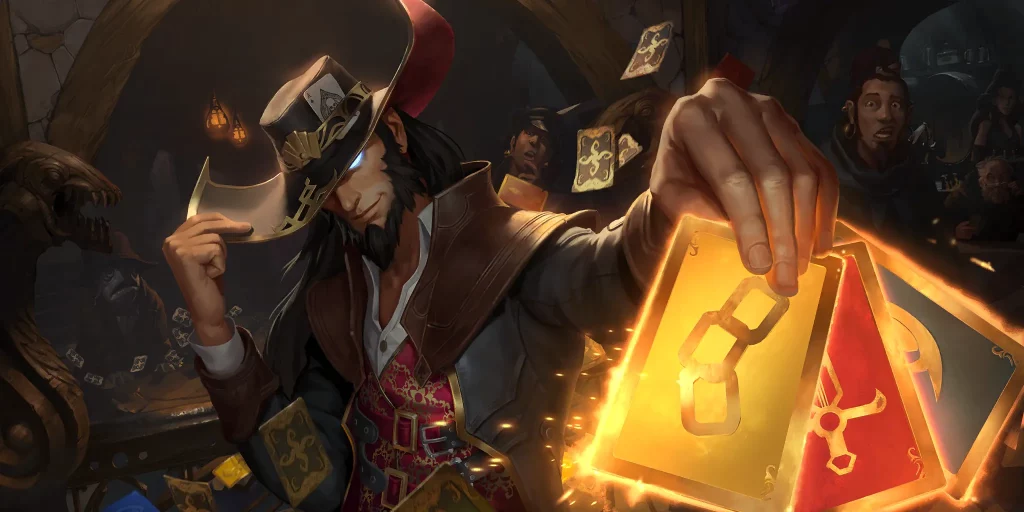
Single Combat can be an offensive tool
can be an offensive tool
When attacking with an Overwhelm unit, you can Single Combat its blocker to push extra damage. Many foes won’t think of this trick and can be caught off-guard. This can also be done with Concerted Strike
its blocker to push extra damage. Many foes won’t think of this trick and can be caught off-guard. This can also be done with Concerted Strike , though more expensively.
, though more expensively.
Don’t overcommit on leveling Twisted Fate
Twisted Fate’s main use is his Play effect, as well as the 2/2 chump blocker. Seldomly will we level him.
Jamming your two Eye of Nagakabouros to level TF might feel great, only until you realize you could’ve played Illaoi
to level TF might feel great, only until you realize you could’ve played Illaoi and killed your opponent.
and killed your opponent.
I’m not saying it never happens, but in 9/10 games, we won’t be leveling Twisted Fate . Don’t be afraid to trade him away to save you some life!
. Don’t be afraid to trade him away to save you some life!
Tech Choices
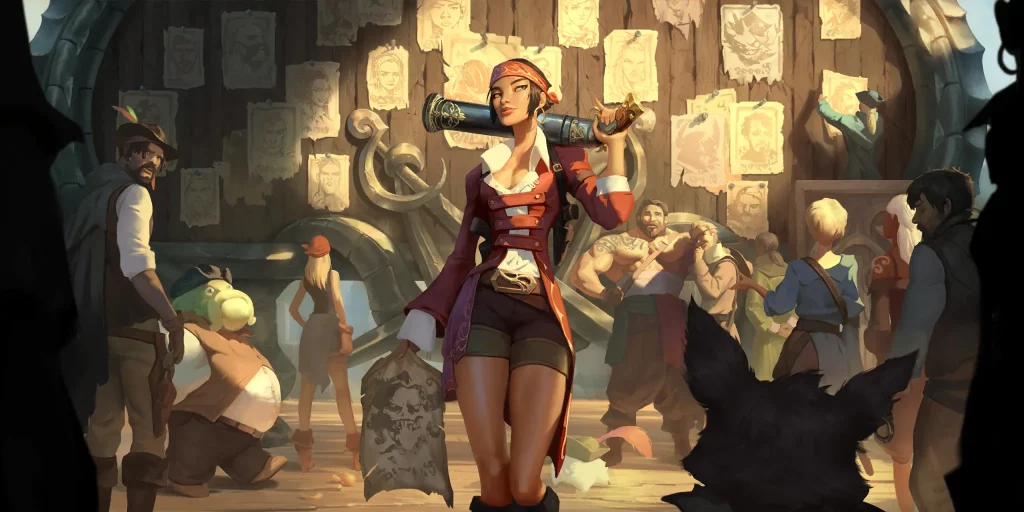
Fleetfeather Tracker can be a handy early-game unit to help against aggro decks like Annie Jhin. It synergizes with the Barrier from Brightsteel Protector
can be a handy early-game unit to help against aggro decks like Annie Jhin. It synergizes with the Barrier from Brightsteel Protector as well.
as well.

The downside, though, is that it becomes a dead draw later on. Against midrange decks like Pantheon Yuumi, it can still pull a blocker away to push damage – but especially against control like Viego Elise, Fleetfeather Tracker becomes obsolete.
becomes obsolete.
Replace Buhru Lookout with your desired amount of birds.
with your desired amount of birds.

Twisted Fate can substitute one Jarvan IV
can substitute one Jarvan IV , which can prove helpful in similar cases as Fleetfeather Tracker
, which can prove helpful in similar cases as Fleetfeather Tracker . TF’s Red Card
. TF’s Red Card can be a game-changer against aggro and is less situational than Jarvan due to his flexible card choice.
can be a game-changer against aggro and is less situational than Jarvan due to his flexible card choice.

Personally, I’m a huge fan of Cataclysm due to its slightly reduced cost. This one-mana difference might seem irrelevant but think back about Deny
due to its slightly reduced cost. This one-mana difference might seem irrelevant but think back about Deny . It used to cost three mana when LoR launched, and had to be nerfed because it could be cast solely with spell mana.
. It used to cost three mana when LoR launched, and had to be nerfed because it could be cast solely with spell mana.
The same can be said about Cataclysm . With three spell mana, you can for example go round four Illaoi
. With three spell mana, you can for example go round four Illaoi -> round five Buhru Lookout
-> round five Buhru Lookout + Cataclysm
+ Cataclysm , which you can’t with Golden Aegis
, which you can’t with Golden Aegis .
.
Additionally, the Rally effect of Golden Aegis is pretty similar to Cataclysm
is pretty similar to Cataclysm when you think about it. Usually, you will have one big Tentacle
when you think about it. Usually, you will have one big Tentacle with Overwhelm or Illaoi
with Overwhelm or Illaoi , which are the only units that will push damage when attacking again.
, which are the only units that will push damage when attacking again.
Of course, there are good reasons for Golden Aegis as well. The Rally effect potentially forces your opponent to spend more chump-blockers to block a vanilla Tentacle
as well. The Rally effect potentially forces your opponent to spend more chump-blockers to block a vanilla Tentacle for example.
for example.
Also, the Barrier effect of Golden Aegis can be useful to shut down an opponent’s attack or protect your Tentacle
can be useful to shut down an opponent’s attack or protect your Tentacle /Illaoi
/Illaoi from a Challenger.
from a Challenger.
Feel free to experiment with the ratio of Cataclysm and Golden Aegis
and Golden Aegis and find out what works for you. You can also replace the single copy of Nagakabouros
and find out what works for you. You can also replace the single copy of Nagakabouros with Golden Aegis
with Golden Aegis for more proactivity!
for more proactivity!

Concerted Strike is the deluxe version of Single Combat
is the deluxe version of Single Combat . Since we want our Tentacle
. Since we want our Tentacle s to take as little damage as possible, we might fall back to heavier removal tools such as this.
s to take as little damage as possible, we might fall back to heavier removal tools such as this.
Concerted Strike works especially well against archetypes that focus on creating big units, such as Lissandra Taliyah or Viego Elise.
works especially well against archetypes that focus on creating big units, such as Lissandra Taliyah or Viego Elise.
Replace one copy of Eye of Nagakabouros , Answered Prayer
, Answered Prayer , or Buhru Lookout
, or Buhru Lookout for up to two copies of Concerted Strike
for up to two copies of Concerted Strike .
.
There are also some popular but less optimal tech choices such as Hired Gun and Screeching Dragon
and Screeching Dragon . They do have their place, but only in very specific matchups.
. They do have their place, but only in very specific matchups.
Including them loses you more games than they win in the long run, so I won’t discuss them here. You might try them out yourself, but it’s backed by stats that they aren’t good, be aware of that fact!
Matchups

When it comes to matchups, think of your opponent's goals. What is their game plan and how do they get there?
Most importantly: What are their key rounds?
For Taliyah Ziggs, that might be rounds five or six, when they get to attack with a leveled Taliyah .
.
For other decks – Thralls, for example – these key rounds become more dynamic, depending when they are able to cast Promising Future or summon a Frostguard Thrall
or summon a Frostguard Thrall .
.
To know the opponent better, I recommend searching for a common decklist on MasteringRuneterra.com/decks or Runeterra.ar/meta. I will be linking to a list for each, in their respective matchup – simply click on the deck name to find it!
Annie Jhin – favored
Mulligan: Watchful Idol , Petricite Broadwing
, Petricite Broadwing , Brightsteel Protector
, Brightsteel Protector
As mentioned while discussing Petricite Broadwing and Brightsteel Protector
and Brightsteel Protector , they are the reason this matchup is so good – killing Annie
, they are the reason this matchup is so good – killing Annie for free with Petricite Broadwing
for free with Petricite Broadwing will give you a rush of dopamine.
will give you a rush of dopamine.
If they happen to draw a perfect curve we're going to lose here, though – there is not too much thinking to be done in those cases.
If you found Petricite Broadwing already, you can also look for Tentacle Smash
already, you can also look for Tentacle Smash or Twisted Fate
or Twisted Fate in your Mulligan.
in your Mulligan.
Single Combat can prevent Noxian Fervor
can prevent Noxian Fervor from going off.
from going off.
Lissandra Taliyah – favored
Mulligan: Watchful Idol , Illaoi
, Illaoi
Lissandra Thaliyah plays around the Frozen Thrall landmark. We don’t have any way of destroying their landmarks or denying Promising Future
landmark. We don’t have any way of destroying their landmarks or denying Promising Future – this means that we are the beatdown in this matchup and have to race them before they can flood their board with Frostguard Thrall
– this means that we are the beatdown in this matchup and have to race them before they can flood their board with Frostguard Thrall s.
s.
This, or we grow a Tentacle to be bigger than 8/8 and out-trade their heavy-hitters. Be aware of Three Sisters
to be bigger than 8/8 and out-trade their heavy-hitters. Be aware of Three Sisters though, as that spell can render our Tentacle
though, as that spell can render our Tentacle useless. Try to time your removal spells on the opposite turn where you want to trade with their Frostguard Thrall
useless. Try to time your removal spells on the opposite turn where you want to trade with their Frostguard Thrall , so they don’t get double the value from Frostbiting your unit.
, so they don’t get double the value from Frostbiting your unit.
Annie Ezreal – slightly unfavored
Mulligan: Watchful Idol , Petricite Broadwing
, Petricite Broadwing , Illaoi
, Illaoi
This matchup can either be misery or a great learning opportunity for you.
If you decide to play around every possible two-spell combination they might have, it will be miserable. There are too many spells to be played around, so this method will render you unable to do anything and cry in despair (I've been there =).
The other option is to force your opponent to have a certain two-spell combination or otherwise they lose. Think about it his way – how often do you find Watchful Idol and Illaoi
and Illaoi in your opening hand? Not that often, huh?
in your opening hand? Not that often, huh?
Instead of playing around several copies of Disintegrate or Ravenous Flock
or Ravenous Flock , you might think about how you can play around one. How can you divide your Spawn spells to grow another medium-sized Tentacle
, you might think about how you can play around one. How can you divide your Spawn spells to grow another medium-sized Tentacle after they Disintegrate
after they Disintegrate the first?
the first?
Trading away a 2/2 Tentacle to block some damage can also be worth it to keep your Nexus health high and make your opponent struggle to decide when the right time is to use their removal. We keep Petricite Broadwing in the Mulligan to threaten Annie
in the Mulligan to threaten Annie and block one of their (few) units.
and block one of their (few) units.
Elise Katarina Viego – unfavored
Mulligan: Watchful Idol , Illaoi
, Illaoi
This matchup is rough due to their access to Noxian cards. Dealing with Viego and Invasive Hydravine
and Invasive Hydravine wouldn’t be a problem on its own, but their ability to kill our big Tentacle
wouldn’t be a problem on its own, but their ability to kill our big Tentacle with Disintegrate
with Disintegrate and out-grow us with Legion Deserter
and out-grow us with Legion Deserter means that we have close to no outs.
means that we have close to no outs.
Our best shot is to out-tempo and roll over them. If they carelessly develop a Viego who we can remove with a Tentacle Smash
who we can remove with a Tentacle Smash , we can swing the game in our favor. Thus, keeping four mana open to make them think twice about developing Viego
, we can swing the game in our favor. Thus, keeping four mana open to make them think twice about developing Viego is a worthy consideration.
is a worthy consideration.
Otherwise, try not to take too much damage early. Unfortunately, they will eventually outgrow us with Legion Deserter , so going for a long game will not benefit us either.
, so going for a long game will not benefit us either.
If they whiff on Vengeance and we get a strong Illaoi
and we get a strong Illaoi attack in, we might have a chance!
attack in, we might have a chance!
Conclusion
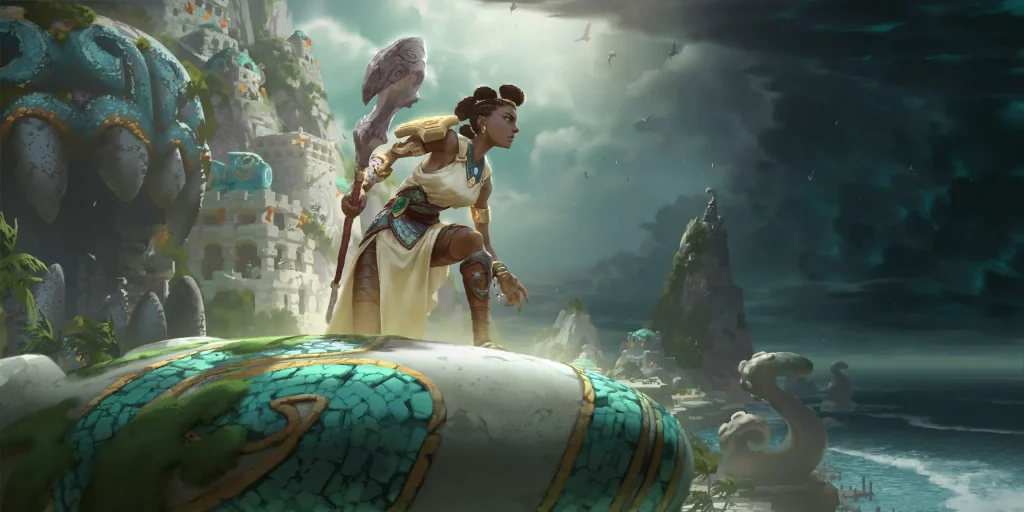
Due to their favorable matchups against Thralls and Jhinnie, Illaoi TF J4 is a solid choice for the ladder.
It found even greater success in the early days of the patch, when the meta was flooded with Jhinnie, but due to the growing popularity of Elise (Katarina) Viego and other Noxus decks, Illaoi and friends have suffered a little in recent times.
If you want to bring the archetype to a Bo3 format, pairing them with most Demacia decks works well.
For example, you can bring Illaoi J4 TF with Pantheon Yuumi and Akshan Sivir for a cohesive and powerful midrange trio that will beat most control lineups, and those that bring Thralls!
I hope you enjoyed this in-depth guide and have learned something new. I encourage you to try out your own decklist and make your own experience with Illaoi TF J4.
If you have any questions about the guide, don't hesitate to reach out to me on Twitter (@Leer97) or Discord (Leer#2026)!
I’m also open to feedback and advice on how to improve the next guide for you, so please tell me what you’d like to see next!
Thanks for reading and see ‘ya in the next guide! =)
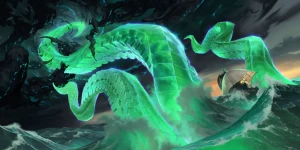


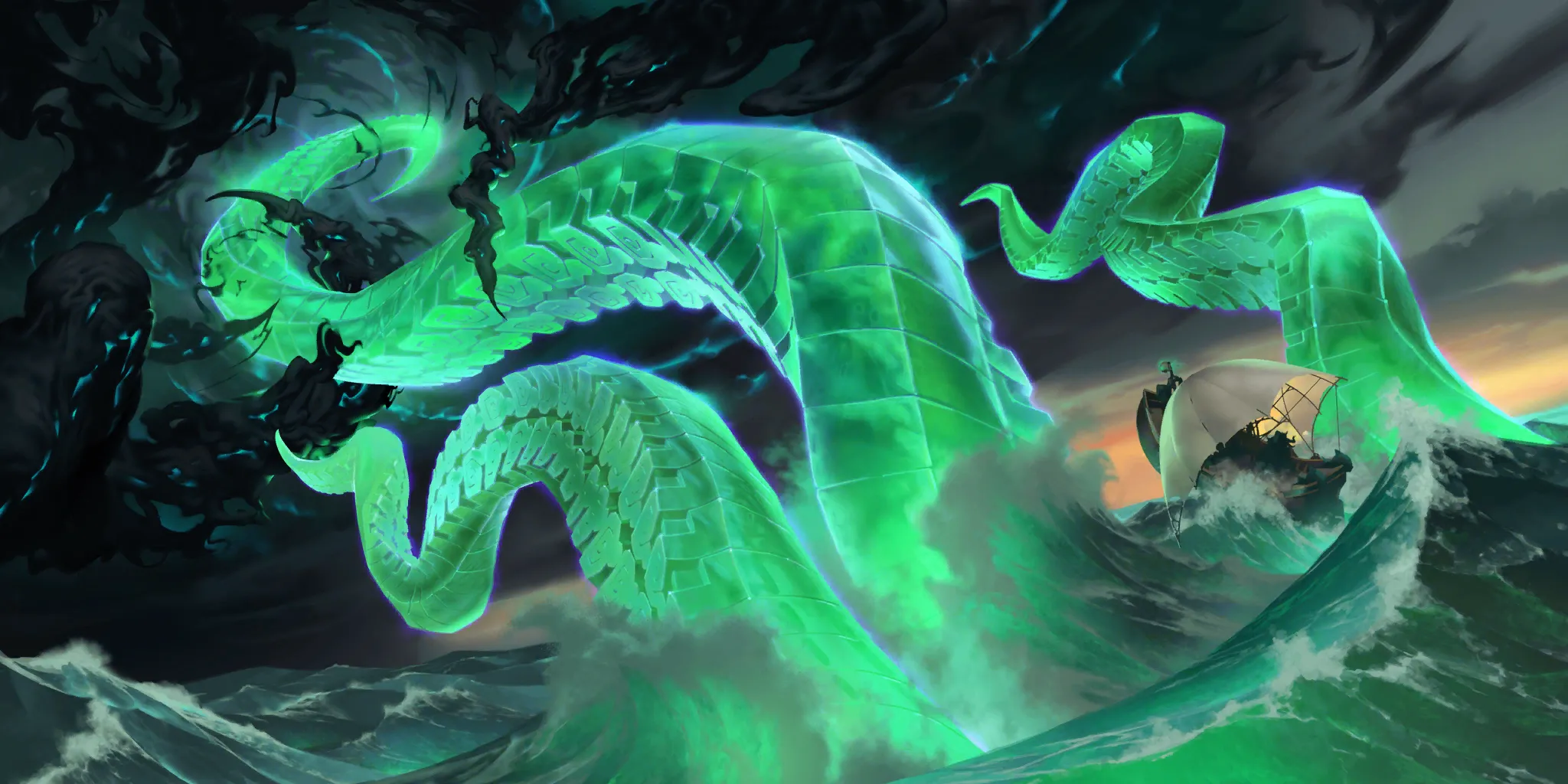
 can prevent a big enemy from attacking, or immobilize a blocker,
can prevent a big enemy from attacking, or immobilize a blocker, will cycle our hand and put another clock on the board that has to be dealt with.
will cycle our hand and put another clock on the board that has to be dealt with.